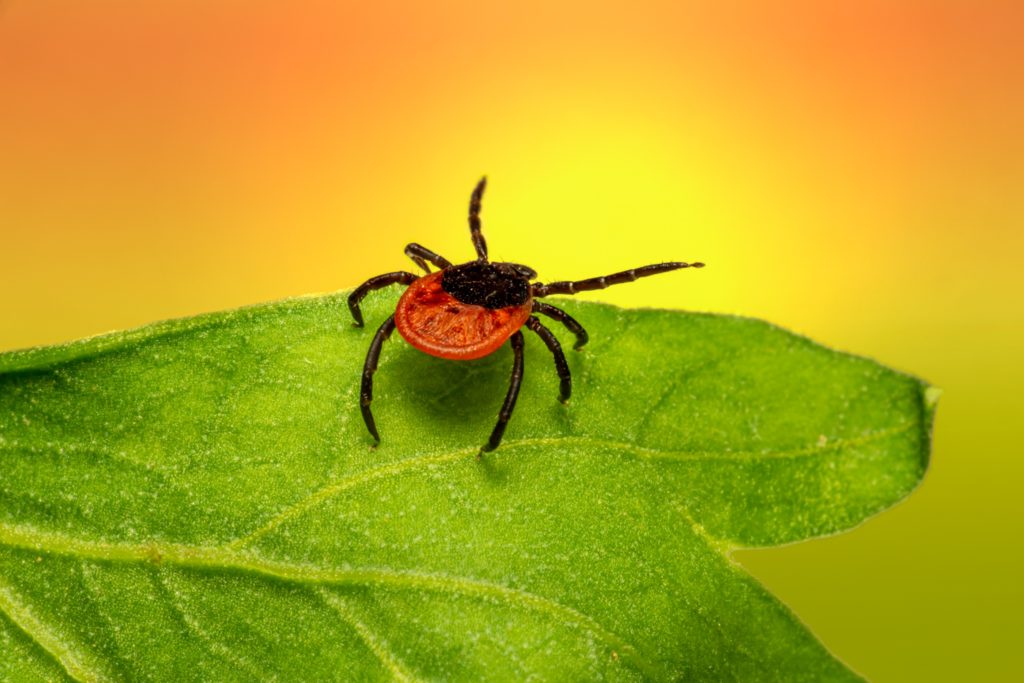
“Health & Exercise Forum” regularly promotes active lifestyles and outdoor activities. However, being one with nature is not without its risks and attracting ticks which can lead to Lyme disease is one of them. Over the last few years, I have been amazed by how many ticks I find on my clothing and skin after being outdoors…year round! Last winter, for example, we had an unexpected warm-up in February, and with temperatures ranging from 30 degrees in the morning to 60 degrees in the afternoon, I decided to ski in the morning and snow-shoe on the trails at Lackawanna State Park in the afternoon. Due to snow cover, I occasionally wandered off the trail and hiked through some brush. Later that evening, I discovered a tick on my neck, despite showering, wearing winter clothing and it being outdoors in FEBRUARY! It is no small wonder why some experts blame climate change on the dramatic increase in cases of Lyme disease…the research supports it! Later that summer, while I was not formally diagnosed with Lyme disease, I did suffer from symptoms associated with the disease for about 8 weeks. This experience has caused me to pause and take precautions when I garden, kayak, hike, mountain bike or engage in any outdoor activity that takes place near brush or wooded areas.
According to the Centers for Disease Control (CDC), approximately 300,000 cases of Lyme disease occur each year in the United States. Lyme disease is a bacterial infection caused by the bite of an infected deer tick and most prevalent in wooded and grassy areas of the New England, Mid-Atlantic and upper Midwest States. A heightened awareness and preventative measures are recommended for those who live, work, play, camp, hike, or bike in these areas.
Ticks thrive in moist and humid environments, especially in and near wooded and grassy areas. Wear long sleeve shirts and long pants with socks when spending extended periods of time in risky environments.
When walking, hiking, or biking, stay in the middle of the trail and avoid the brush.
The CDC recommends repellent containing 20% or more DEET, Picaridin, or IR3535 on exposed skin. Use products with 0.5% permethrin on clothing, boots, pants, socks, tents and other gear. Visit the Environmental Protection Agency (EPA) for more information about product safety.
Keep your yard free of tall grasses and brush and use gravel or wood chips as a barrier. Mow the grass often and remove leaves quickly. Place playground equipment and toys in dry sunny area and away from brush and high grasses. Don’t feed or encourage deer to visit your living area. Chemical treatment for your yard and outdoor living space is available but should be used with caution and as a last resort.
Use flea and tick treatments regularly on your pets such as Advantage IIR or Frontline PlusR and others. Ask your veterinarian for recommendations.
After being outdoors, perform a tick check. Use a mirror or family member to help you check hard to view areas. Also, carefully examine your clothing and pets for ticks before entering your home. Drying your clothing in the dryer on high heat will kill ticks.
The CDC recommends that you closely check these areas for ticks:
As soon as you enter your home (preferably through a mud room or basement), remove your clothes and take a shower.
If you find an attached tick use a fine-tipped tweezers and carefully remove it as soon as possible. If a tick is attached to your skin for less than 24 hours, your chance of getting Lyme disease is very unlikely.
If you find a tick, keep an eye on the area for a few weeks. Look for signs or symptoms of Lyme disease such as rash or fever and contact a healthcare professional if you are suspicious.
Some or all of these symptoms can be associated with Lyme disease and you should contact your physician if you are suspicious: Skin Rash, Fever and Chills, Fatigue, Muscle and Joint Pain/Ache, Headache.
In conclusion, it is well-documented that Lyme disease is on the increase, due in part to warmer winters in the mid-Atlantic and northeast US. However, while experts are encouraging people in risky areas to take precautions during the spring and summer months, they are also encouraging parents not to limit outdoor activities for children and others. Keep in mind that spending too much time indoors is far worse for your health than the risk of contracting Lyme disease in the long run. And, even if you are bitten by a tick, you only have a 100 to 1000 chance of contracting the disease.
SOURCES:

This article is not intended as a substitute for medical treatment. If you have questions related to your medical condition, please contact your family physician. For further inquires related to this topic email: drpmackarey@msn.com
Paul J. Mackarey PT, DHSc, OCS is a Doctor in Health Sciences specializing in orthopaedic and sports physical therapy. Dr. Mackarey is in private practice and is an associate professor of clinical medicine at Geisinger Commonwealth School of Medicine.
For all of Dr. Mackarey's articles visit https://mackareyphysicaltherapy.com/forum/